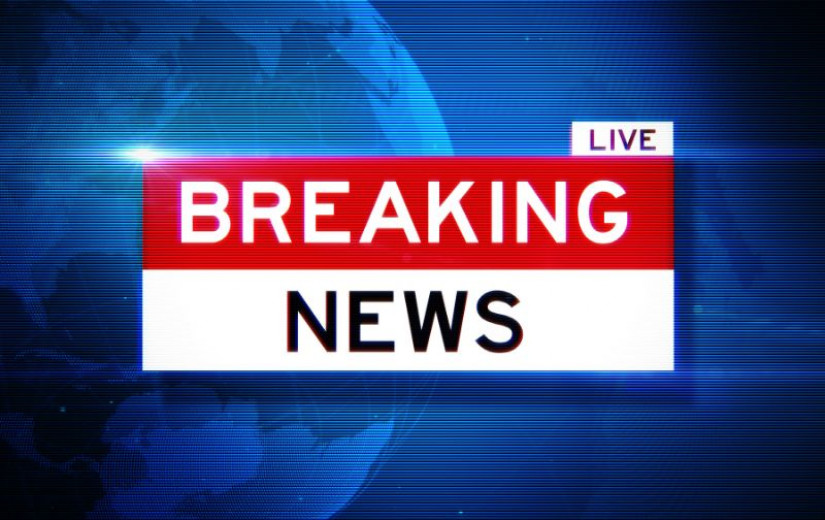
It isn’t news that the Palestinian Authority (PA) is in a deep crisis, and much of it is caused by Israel’s policy of economic strangulation. The Israeli government has been blocking the PA’s customs money, making it increasingly difficult to continue running public services, security, and its own bureaucracy. Israel’s hardline Finance Minister, Bezalel Smotrich, is threatening not to renew the indemnity that allows Israeli banks to deal with Palestinian banks, and if he goes through with it, it would trigger the collapse of the Palestinian banking sector, and possibly the PA itself.
Then there’s Israel’s brazen military raids into PA-administered areas, looting money exchange offices, and arresting hundreds of Palestinians before parading them through the streets in front of the headquarters of the PA Security Forces.
The Israeli cabinet even renewed discussion over the idea of installing a local tribal “Emirate” in Hebron instead of the PA as a prelude to doing the same elsewhere in the West Bank, which Israel has signalled that it plans to annex. Israeli politicians have been openly accusing the PA of “encouraging terrorism” by giving salaries to the families of Palestinian prisoners and Palestinians killed by Israel, calling it a “pay-for-slay” policy. The accusation continues to be repeated even after the PA ended its social aid program for the families of Palestinian prisoners last February.
All of these measures have naturally pushed Palestinians to wonder whether Israel intends to push the PA into collapse, reasoning that such an eventuality perfectly fits Israel’s explicit plan to annex the West Bank and ethically cleanse the Gaza Strip.
But the PA isn’t still standing by dint of its own steadfastness and determination. The PA has no borders and is bereft of any military force capable of defending its existence. Its security forces are regulated by the U.S. with Israeli approval, and they are required to continue “security coordination” with Israeli forces. If Israel wanted the PA to collapse, it wouldn’t be very hard. So it raises the inevitable question: if Israel wants to destroy the PA, what is it waiting for?
Tracing the origins of the Palestinian Authority
The creation of the PA is generally accepted to be traced back to the Oslo Accords in 1993, under which the administration of civil affairs of Palestinians in the West Bank and Gaza was transferred to the PA. It was supposed to be the embryo of a coming Palestinian state, which Israel today openly admits it rejects. But the PA exists for more than simply being a partner in a failed negotiation process with Israel.
The Oslo Accords themselves were a way out of a situation that Israel had failed to stop from growing into reality; its occupation of the West Bank and the Gaza Strip, which had been running since 1967 was no longer sustainable in its then-form. The Israeli army’s ‘civil administration’ ran the daily life matters of Palestinians in ‘the territories’, the Israeli name for the West Bank and Gaza. It paid teachers, doctors, and administered municipalities. Palestinians were directly under Israeli governance, without being Israeli citizens. They had no space to express their collective identity, or to govern themselves, not even at the most basic, local level.
In 1982, Israel began an attempt to curve the growing Palestinian sentiment of anger and frustration. It started to hand limited powers to members of prominent clans in the villages of Hebron and Nablus, forming councils called ‘village leagues’. But the village leagues failed to build themselves any legitimacy. Youth and student activists organized in volunteer groups began to take on development projects that the leagues promised, with resources from the communities themselves, explicitly calling out the leagues as collaborators. Meanwhile Palestinian militants targeted the league’s leaders, killing several of them.
Then came the first Intifada. The popular uprising was an extension of the Palestinian rejection of the villages’ leagues and of the Israeli occupation in the previous years. The Intifada, which was largely civilian and mass-led, was primarily a wave of rejection of Israeli control through the civil administration. Palestinians boycotted the civil administration’s bureaucracy, stopped paying taxes, and formed ‘popular committees’ to run their daily affairs on a local level, while openly challenging Israeli bans and repression of Palestinian national expression.
For six years, Israel tried to break the Intifada and restore the previous status-quo, but by 1991 it was clear that the change was irreversible. When Israel sat with PLO representatives at the same table for the first time at the Madrid conference in 1991, Israeli then-Prime Minister, Yitzahak Shamir reportedly said that Israel will “negotiate for twenty years without committing to anything.”
The Oslo Accords that came as a result of a two-years negotiation process gave the PLO a chance to establish itself on Palestinian soil for the first time since it was forced to move its first headquarters in Jerusalem, during the 1967 war to Amman, Jordan. For Palestinian negotiators, the establishment of the PA under the Oslo Accords was an opportunity to center the Palestinian national movement on Palestinian soil, which they considered would inevitably evolve into statehood. It was, to them and to many Palestinians, the fruit of the Intifada, earned with much sacrifice and struggle. For Israel, it was a way out of the dilemma of having Palestinian nationalism taking physical form in the occupied territories, while maintaining the Intifada.
Israel continued to be the occupying power in the West Bank and Gaza, including in areas under the jurisdiction of the PA. While technically under international law, Israel has the responsibility to provide services for the occupied population, this responsibility was transferred to the PA, funded by donor countries who happily invested in what was seen as the project of a Palestinian state. The PA also helped maintain stability, and cracked down on Palestinian groups and individuals who continued to resist the occupation.
Even after resistance blew-out in full force during the second Intifada in the early 2000s, with the PA’s leader Yasser Arafat supporting the Intifada, the PA was not removed. Israel bombed its headquarters, invaded its sanctuary cities, and besieged its president, Arafat, in his office in Ramallah, but the PA was held in place. It was put under a US-led process of ‘reform’, which saw the rebuilding of its security forces, the creation of the position of Prime Minister, and the introduction of figures from the business sector with neoliberal economic agendas into the PA’s government.
That ‘reformed’ PA is the one that Israeli leaders accuse today of supporting terrorism and which the Israeli government officially refuses to concede any role in the administration of Gaza after the war. It is this PA which pledges peaceful cooperation with Israel, including in security matters. It is this PA, that, after pressure from Israel and the U.S., ended its social aid program to families of Palestinian prisoners and those killed by Israel. It is this PA, that is experiencing its worst ever financial crisis, and is on the brink of collapse. And yet, despite wielding near total power over the Palestinian government, Israel still has a bone to pick with the PA.
The fate of the PA, as it stands today
In a nutshell, Israel’s current major problem with the PA is that the latter is actively pursuing international recognition as a state, leaving behind the dictates of the obviously-dead negotiations process. The PA declared itself as ‘The State of Palestine’ in 2011, and began to join international treaties, including the Rome statute in 2014, which allowed Palestine to sue Israel before the International Criminal Court. This explains Israel’s punitive measures against the PA, including the continuous financial strangling of the PA, which had begun two years before October 7, 2023, and only intensified afterwards.
However, the PA continues to abstain from challenging Israeli control on the ground. Although Israel has explicitly rejected Palestinian statehood – the entire point of a two-state solution based peace process – and made its rejection into law in three bills passed by the Knesset in 2018, 2024, and 2025. And although Israel continues to directly violate its obligations under the Oslo Accords by raiding PA-held cities and blocking the PA’s customs money, the PA has still yet to change its behavior on the ground.
The PA continues to respect the Oslo-segregation of the West Bank into Areas A, B, and C, abstaining from deploying security forces into Palestinian villages to provide even a symbolic protection to Palestinian rural communities from Israeli settler violence. The PA continues to crack down on Palestinian militants, and continues to coordinate security and civil matters with Israeli authorities. To the PA, it is a way to avoid a major Israeli reaction similar to the Israeli invasion of West Bank cities in 2002, or even like the current destruction of Gaza. But the PA went a step further, caving to Israeli pressure and ending its social aid program that provided a stipend to the families of political prisoners in Israeli jails.
It is clear that Israel’s problem with the PA is that it is trying to become more than a mere self-administration body for Palestinians under Israeli rule, and seeks to gain some political role with international recognition. It doesn’t matter that the PA is avoiding at all costs to confront Israel, let alone impose any form of state presence outside the confines of the areas designated to it under the Oslo accords, which Israel raids on a daily basis. What matters to Israel is that the PA is trying to regain its former status as a political representative of Palestinians, giving them, even if symbolically, the aspect of a nation under occupation. That is something that Israel wants to erase.
The current Israeli undermining of the PA’s authority and its financial stranglehold can be understood as a response to the international wave of recognition of Palestine as a state, and as an attempt to reduce the PA back to its administrative role, without any political content. This could be an anticipation to give the PA a role in the running of Gaza after the end of the current war. This could resonate with the US position, which demands the PA to undergo ‘reforms’, before having any role in Gaza. Israel’s objective is also to cripple the PA’s capacity to perform state-like tasks in the West Bank, keeping it in its daily-life administration function, struggling to pay its teachers and police officers.
However, there is a clear current in Israeli politics that calls for the complete removal of the PA, and the annexation of all the areas it runs, including the expulsion of the Palestinian population. Its current voting base is mainly centered around the settler movement, and which has key figures in the Israeli government. The fate of the PA could be swinging between the maximalist demands of the Israeli far-right to remove it entirely, and the attempts of crippling its political role. The ultimate outcome can’t be predicted, but what is sure is that the fate of the PA lies entirely in the hands of Israel and whatever the US decides to green light, with little or no actual pushback by the rest of the world.









